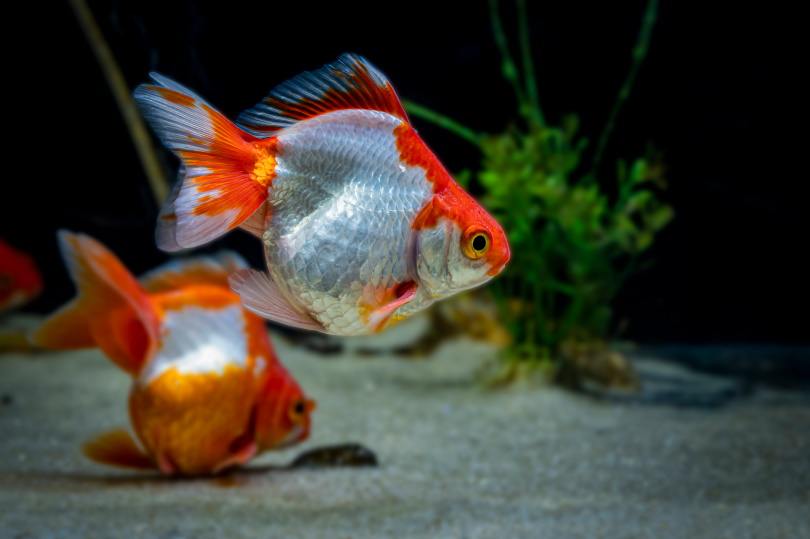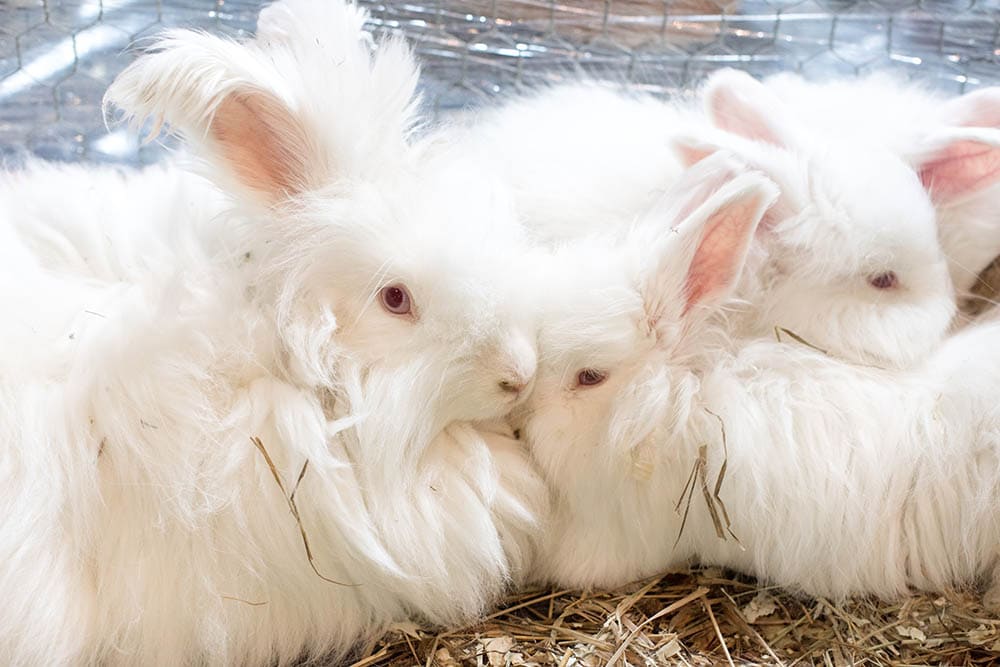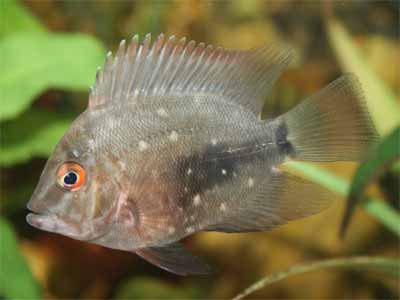Click to Skip Ahead
The Mikado pheasant is a rare game bird, also known as Syrmaticus mikado, endemic to Taiwan. There, they can be found in mountainous regions and forests, roaming amongst bamboo and a variety of shrubs. At present, Mikado pheasants are considered near threatened, with few existing in the wild. Read on to find out more about this elusive bird.

Quick Facts About the Mikado Pheasant
| Breed Name: | Mikado pheasant/Syrmaticus mikado |
| Place of Origin: | Taiwan |
| Uses: | Ornamental |
| Cock/rooster (Male) Size: | Up to 27.5 inches long |
| Hen (Female) Size: | Up to 18.5 inches long |
| Color: | Blue, black, purple (male), brown (female) |
| Lifespan: | 8–10 years |
| Climate Tolerance: | Mild weather |
| Care Level: | Moderate |
| Production: | None |
Mikado Pheasant Origins
The Mikado pheasant is endemic to Taiwan. Not much is known about the Mikado pheasant’s exact origins, but the breed’s ancestors are estimated to have first sprung up in the Taiwanese mountains around 2.8 million years ago. In Taiwan, some consider the Mikado pheasant to be the country’s national bird.
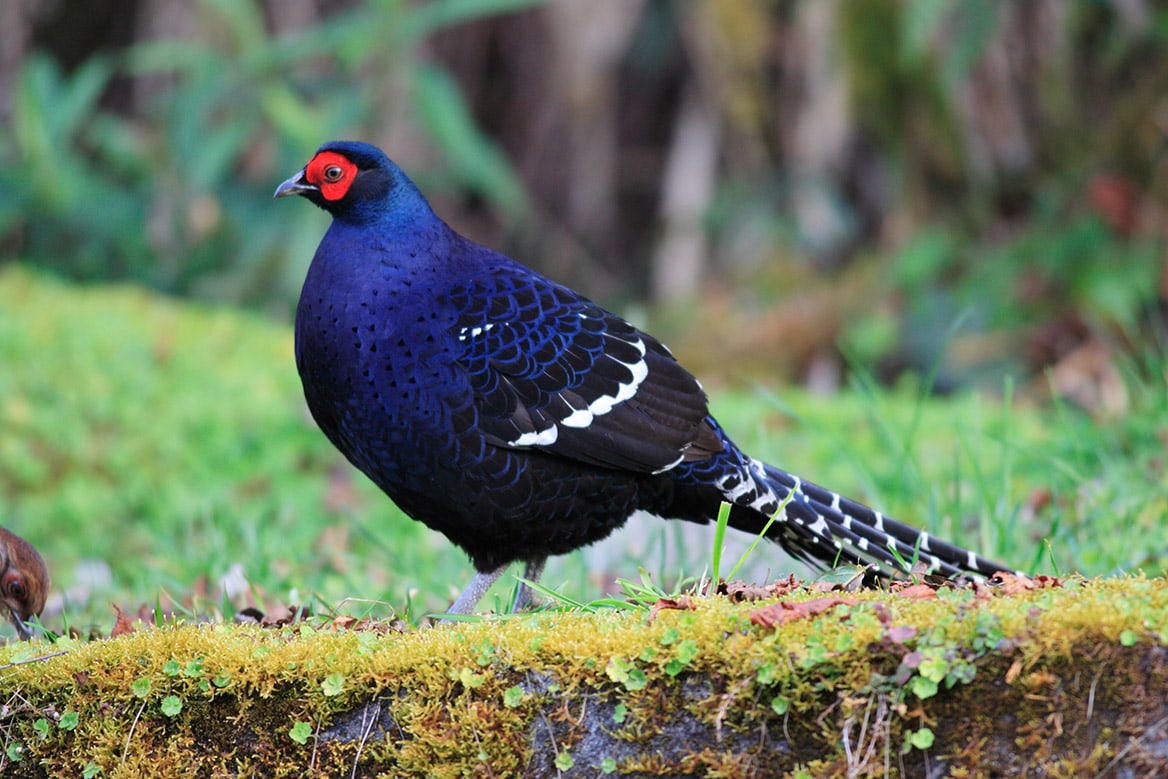

Mikado Pheasant Characteristics
Mikado pheasants are often found alone or in pairs. They use vocalizations to communicate, and in mating season males drum their wings and vocalize with high-pitched whistles to attract females. They can fly, but only for short distances. When running, the Mikado pheasant can reach speeds of up to 16 kph(10 mph) and when flying, speeds of up to 97 kph(60 mph).
Mikado pheasants mate between March and June, with the egg incubation period lasting approximately 26 to 28 days. The eggs are large, creamy-white in color and a female usually lays between three and eight eggs at a time.
One of the Mikado pheasant’s most fascinating habits is venturing out just after heavy rain or during light rain. They do this because the mist left behind helps conceal them from predators. This has earned these birds the name “King of the Mist” in Taiwan. They are also known as the “Emperor’s pheasant” to some.
Temperament-wise, Mikado pheasants are wary and alert but quiet. If humans are around, they’re likely to be neither forthcoming nor aggressive. Rather, they’ll remain neutral and tolerant of human presence.
Uses
People sometimes keep Mikado pheasants as pets. They are not usually raised for meat or eggs, likely due to their scarcity. Mikado pheasants are ornamental birds for the most part, and enthusiasts of the breed are fond of their appearance, hardiness, and “chatty” natures. Many enjoy the Mikado pheasant’s pleasant vocalizations, too.
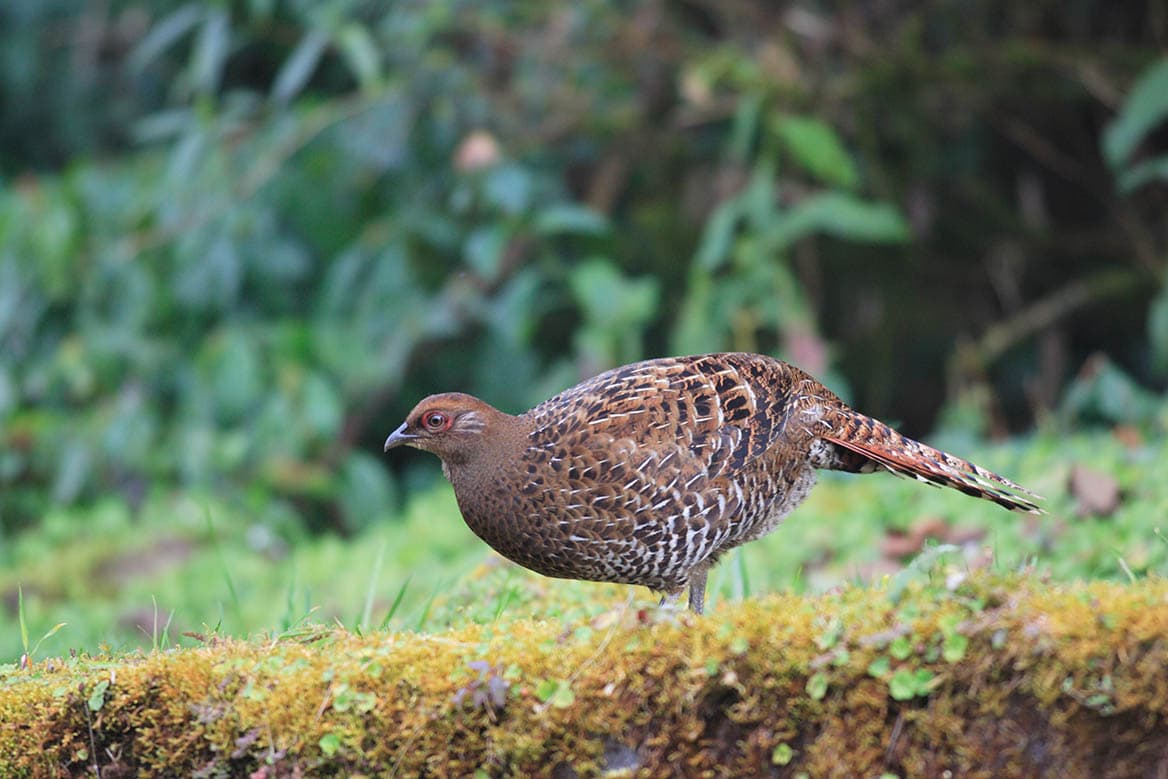
Appearance & Varieties
Male Mikado pheasants are pretty eye-catching with their glossy black and blue, purple-tinted, and white-flecked feathers, bright red wattles, and a stripey black and white tail. Their tales are longer than those of females. Males can be anywhere up to 27.5 inches in length, 8.7 inches in height, and weigh anywhere up to 2.6 pounds.
By contrast, females are much smaller. They are usually around 18.5 inches long, 7.9 inches tall, and weigh approximately 1.3 pounds, though this can vary. Female Mikado pheasants have light brown feathers with dark brown and white quills. They also have a red wattle, though it appears paler than the males. Their tails are also stripey but are dark brown and orange in color.
- See Also: 6 Types of Pheasants
Population, Distribution, Habitat
There are approximately 10,000 Mikado pheasants in the wild, with many in the mountains of Yushan National Park. They also inhabit coniferous forests and have a preference for misty, foggy areas up to 3,300 meters above sea level. They’re usually found amongst bamboo, shrubs, and roaming grassy open spaces.
As omnivores, the Mikado pheasant’s diet consists largely of invertebrates, seeds, berries, fruits, vegetables, and leaves.
- See Also: 14 Fascinating Pheasant Facts
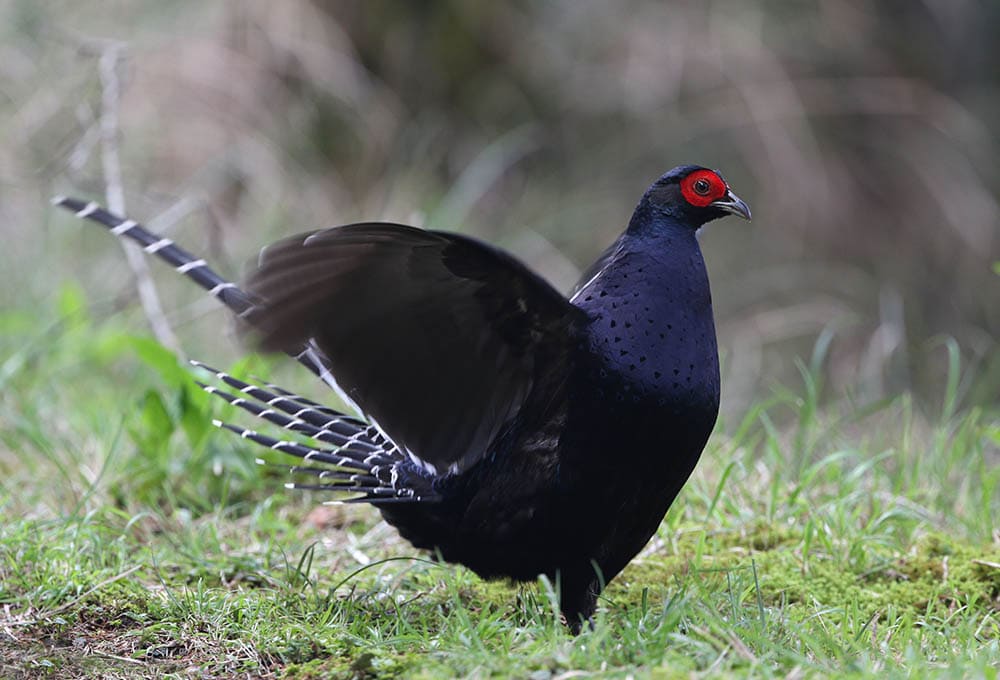

Are Mikado Pheasants Good for Small-Scale Farming?
Mikado pheasants are largely ornamental and are raised for enjoyment rather than for feather, meat, or egg production. You may find them on small-scale farms here and there, roaming around freely or chilling out in aviaries.
To be kept as pets, they need plenty of open space for roaming—preferably with bushes and trees—and a large aviary for downtime. That said, acquiring Mikado pheasants won’t be easy—some people do sell them as pets, but this isn’t very common.

Final Thoughts
As the result of being hunted for their feathers and meat in the past, the Mikado pheasant once came close to extinction, but fortunately, the species has survived. Hopefully, the stunning Mikado pheasant can continue to flourish peacefully in the Taiwanese mountains for a long time to come.
If you’re lucky enough to come across a Mikado pheasant on your travels, consider yourself honored. It’s not often that we mere mortals get to be in presence of the “King of the Mist”!
Featured Image Credit: JamesHou, Shutterstock






